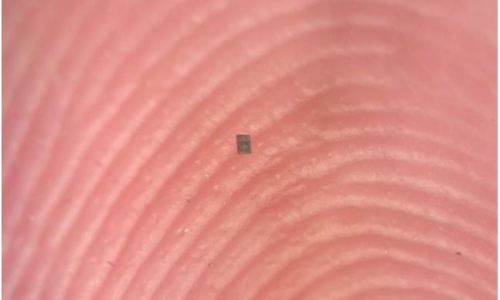


 11:2:3
11:2:3  2024-11-07
2024-11-07  961
961

Early in the life of the Solar System, things were a lot more violent than they are today. Rocks were flying everywhere, willy-nilly, smacking into the newly formed planets, pocking them with craters and gouging out impact basins.
Mercury, Mars, and the Moon are all heavily scarred. Even Earth – where geological and weathering processes quickly erode most of the evidence – shows signs of giant impacts.
But there's something really weird about Venus.
Though the hellish world has beautifully preserved impact craters on its surface, scientists could find no evidence of craters more than 300 kilometers (186 miles) across, otherwise known as impact basins.
Now, that evidence has emerged. It just doesn't look the way we expected it to – which could give us new clues about Venus' formation and evolution, back when the Solar System was young.
That evidence is a feature known as tessera terrain; a series of concentric rings on the surface of Venus some 1,500 kilometers across. New analysis suggests Venus's Haastte-Baad Tessera was the result of two giant impacts, one right after the other, with a planet that was still mooshy and molten beneath a thin crust, some 3.5 billion years ago.
"If this is really an impact structure it would be Venus' oldest and largest, giving us a rare glimpse into Venus' past and informing early planet processes," says geologist Vicki Hansen of the Planetary Science Institute.
"And perhaps even more important, it shows us that not all impact structures look alike. Impact structures result from a bolide – a body of unspecified composition – that collides with a target planet. The nature of the bolide is important, but so too is the nature of the target."
When the rocky planets were newly formed, they were much warmer inside than they are now, their molten interiors making up more of their volume beneath a far thinner crust. Hansen and her colleagues performed modeling analysis to study the formation processes that could have produced the Haastte-Baad Tessera, and determined that a double impact was the most plausible scenario.
Two impactors, back-to-back, would have punched right through the 10-kilometer-thin crust on the Venusian surface, and splooshed into the molten mantle below. Magma would have bubbled up to the surface, and the surrounding surface crumpled to form the concentric tessera pattern.
We know that this process can happen because we've seen it elsewhere in the Solar System. On Jupiter's moon Callisto is a multi-ring structure some 3,800 kilometers across. This is Valhalla, the largest known multi-ring impact structure in the system, and scientist believe that it was formed when something large smacked into the icy moon. Frigid water surged from below to fill the hole, and the impact deformed the surrounding crust.
One potential problem with that model is that tessera terrain is sometimes found sitting on a plateau. That's not the case for Haaste-Baad, but the model needs to incorporate plateau settings; if an impact can't produce a tessera plateau, something else would have to be responsible for the ring structures.
"This is where it gets fun," Hansen explains.
"When you have vast amounts of partial melt in the mantle that rushes to the surface, what gets left behind is something called residuum. Solid residuum is much stronger than the adjacent mantle, which did not experience partial melting. What may be surprising is that the solid residuum is also lower density than all the mantle around it. So, it's stronger, but it's also buoyant. You basically have an air mattress sitting in the mantle beneath your lava pond, and it's just going to rise up and raise that tessera terrain."
If the lava stays put, it will harden in that raised position. If it drains away, the elevation of the terrain will sink down, as we see with Haastte-Baad.
The modeling suggests that the impactors that produced the terrain were pretty large, about 75 kilometers across, give or take. This seems to have been a pretty rare occurrence in the Solar System, but not unheard-of; there are geological features on Earth that may have formed the same way, such as a dike swarm at Lake Victoria in Africa.
"Who would have thought flat low-lying tessera terrain or a big plateau is what an impact crater could look like on Venus?" Hansen says.
"We had been looking for big holes in the ground, but for that to happen, you need a thick lithosphere, and early Venus didn't have that. Mars had a thick lithosphere. The Moon had a thick lithosphere. Earth likely had a thin lithosphere when it was young too, but its record has been greatly modified or erased by erosion and plate tectonics."
Reality Of Islam |
|

A tiny robo

By applying

Stanford, C

A new study
 9:3:43
9:3:43
 2018-11-05
2018-11-05
10 benefits of Marriage in Islam
 7:5:22
7:5:22
 2019-04-08
2019-04-08
benefits of reciting surat yunus, hud &
 9:45:7
9:45:7
 2018-12-24
2018-12-24
advantages & disadvantages of divorce
 11:35:12
11:35:12
 2018-06-10
2018-06-10
 6:0:51
6:0:51
 2018-10-16
2018-10-16
 3:42:22
3:42:22
 2021-12-24
2021-12-24
 3:18:29
3:18:29
 2022-12-24
2022-12-24
 1:34:8
1:34:8
 2022-02-01
2022-02-01
 9:30:2
9:30:2
 2021-11-12
2021-11-12
 6:14:3
6:14:3
 2023-01-18
2023-01-18
 4:26:43
4:26:43
 2022-02-21
2022-02-21
 10:55:53
10:55:53
 2022-06-13
2022-06-13
 5:41:46
5:41:46
 2023-03-18
2023-03-18
| LATEST |